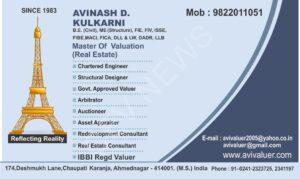Saturday Brain Storming Thought (68)
K P Varghese Vs ITO (1981) ITR 597 (SC)
In Nut Shell
15% variation in 2 valuations is normal.
A decision which saw a division of opinion amongst High Court Judges after a three judge bench of the Kerala High Court through a decision of majority, reversed the decision of single judge
Facts of Case
1) Assessee K P Varghese was the owner of house situated at Ernakulam
2) He purchased the property in year 1958 for Rs 16,500.00
3) on 25/12/1965 he sold the property for the same price of Rs 16,500.00 to his daughter in law and five of his children
4) in assessment year 1966-67, no amount was included by way of capital gains in respect of house transfer since house was sold at same price
5) on 04/04/1968, the income tax officer issued a notice under section 148 of the act seeking to reopen the assessment of assessee for assessment year 1966-67
6) assessee to submit a return on income within thirty days of the service of the notice
7) the notice did not state what was the income alleged to have escaped assessment
8) subsequent letter dated 04/03/1969, the ITO intimated to the assessee that he proposed to fix the fair market value of the house sold at Rs 65,000.00 as against consideration of Rs 16,500.00
9) ITO assess the difference of Rs 48,500.00 as capital gains in the hand of assessee
10) Assessee raised objection against reassessment proposed to be made by ITO
11) objections were overruled and the order of reassessment was passed by ITO as Rs 48,500.00 as capital gains and bringing it to tax
12) Sale of house by the assessee was in favor of daughter in law and 5 others who were persons directly connected with him
13) it is not possible to say that the transfer was affected by the assessee with the object of avoidance or reduction of his liability under section 45
14) the assessee thereupon preferred a writ petition in Kerala High Court challenging the validity of the order of reassessment
15) the writ petition came up for hearing before isaacs J, sitting as a single judge of high court
16) after hearing both parties, the learned judge came to the conclusion that understatement of consideration in respect of transfer was a necessary condition for attracting the applicability of section 52 sub section 2
17) bona-fide transaction – Rs 48,500.00 could not be brought to tax as capital gain under this provision
18) Revenue appealed against this decision to a Division Bench of High Court and having regard to the importance and complexity of the question involved
19) The Division Bench referred the appeal to a full bench of three judges
20) division of opinion in judges 2 Vs 1

The order of reassessment made by ITO pursuant to the notice issued under section 148 was accordingly without jurisdiction
Object and purpose of section 52(2)
Those case where there was under statement of consideration and not to strike at honest and bona-fide transactions where the consideration for transfer was correctly disclosed by the taxpayer
We accordingly allow the appeal and quashing the order of reassessment made by ITO
We accordingly allow the appeal and quashing the order of reassessment made by ITO

Importance of this case law for valuation
15% variation in two valuations is normal
1) It is obvious that if the restrictive condition of difference of 15% or more between the fair market value of the capital asset as on date of transfer and the consideration declared in respect of the transfer were not provided in sub section (2), possibility of difference of opinion in subjective assessment of fair market value
2) In such marginal cases it has nothing to do with the question of burden of proof on assessee
3) burdon of establishing proof that there is understatement of the consideration in respect of the transfer always rests on revenue
4) the postulate underlying sub section (2) is that the difference between one honest valuation and another may range up-to 15% and that the constitutes the class of marginal cases which are taken out of the purview of sub section (2) in order to avoid hardship to the assessee
5) price may shoots up between the agreement date and actual sale by more than 15%, no default of any parties account
Gift tax act 1958
If a capital asset is transferred for a consideration below it’s market value, the difference received in respect of the transfer would amount to a gift liable to tax under Gift tax act 1958
But if the construction of the sub section (2) contended for on behalf of the Revenue were accepted, such difference would also liable to be added as part of capital gains taxable under the provisions of Income Tax act 1961
Since the income tax act 1961 and the gift tax act 1958 ate parts of an integrated scheme of taxation and the same amount which is chargeable as gift could not be intended to be charged also as capital gains
It is well settled principle of interpretation that courts in constructing a statute will give much weight to the interpretation put upon it, at the time of its enactment and since, by those whose duty it has been to construe, execute and apply it.
Compiled by:-

Avinash Kulkarni
Chartered Engineer
Govt Regd Valuer
IBBI Regd Valuer


